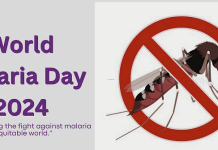Recently, millet has started receiving more attention from researchers than in past years. The findings have been very encouraging. According to researchers, millet is one of the best-kept secrets of the ages, passed down by our ancestors. As tiny as it is, it has been used to feed millions of generation without waning in nutritional value.
As a matter of fact, years back, parents do give their children millet right from three months old until when they are grown enough to start taking swallow and other foods. Traditionally, the grains are soaked in water for up to three days, before wet-milling and sieving to remove husks. The filtered cereal is then allowed to ferment for up to three days until sour. It is then boiled into a pap, or cooked to make a creamy pudding. It may be eaten with moin moin or akara.
This small “grain” is gluten-free and packed with vitamins and minerals. In fact, while it's often called a grain because of its grain-like consistency, it is actually a seed. It's often used in birdseed mixture.

Millet is one of the best possible grains to add to your diet if you want to protect your heart, which is something that everyone can relate to. Millet is a rich source of magnesium, which is an important mineral for reducing blood pressure and the risk of heart attacks of strokes, particularly in the case of atherosclerosis. Millet is also a great source of potassium, which further keeps blood pressure low by acting as a vasodilator.
It’s a super food that contains small amounts of goiter genic substances that limit uptake of iodine to the thyroid. The “thyroid function inhibitors” can cause goiter when consumed in large quantities; this may explain the correlation between millet consumption and goiter incidence in developing countries where millet constitutes a significant part of the diet.
According to Dianna Herrington, a nutritionist and author at Real Food for Life, millet has the following nutritional and natural remedies:
- Cholesterol Levels in Check
Cholesterol levels go hand-in-hand with heart health, so the high fiber levels in millet make for an ideal cholesterol-lowering approach. Dietary fiber actually eliminates dangerous “bad cholesterol” (LDL) from the system, while promoting the effects of “good cholesterol (HDL). - Protection against Diabetes
Diabetes is a disease found in millions of people around the world. Millet is a beneficial food staple in many developing countries (where diabetes is less frequently found), perhaps because one of the effects of millet is a reduced chance of Type 2 diabetes, thanks to the significant levels of magnesium found in this particular grain. Magnesium is considered one of the most important minerals for increasing the efficiency of insulin and glucose receptors in the body, thereby preventing this disease. A 30 per cent reduction in diabetes has been seen in populations divided between diets with or without magnesium. - Digestive Health
As most fiber-rich foods boast, millet can help move your gastrointestinal system along and eliminate problems like constipation, excess gas, bloating, and cramping. By regulating your digestive process, you also improve your nutrient retention and reduce your chance of more serious gastrointestinal conditions like gastric ulcers or colon cancer. Regular digestion and elimination of waste also helps to optimize your kidney, liver, and immune system health, as those organ systems are closely related to the body’s metabolic activities. - Cancer Risk
Recent research has revealed fiber to be one of the best and easiest ways to prevent the onset of breast cancer in women. In fact, women can reduce their chances of breast cancer by more than 50 per cent by eating more than 30 grams of fiber every day. Given that breast cancer is one of the most common and deadliest forms of cancer, this is advice that every woman should hear! - Detoxify the BodyMany of the antioxidants found in millet, in addition to their beneficial impact on neutralizing free radicals, which can cause cancer, they can also clean up other toxins from your body, such as those in your kidney and liver. Quercetin, curcumin, ellagic acid, and various other beneficial catechins can help to rid your system of any foreign agents and toxins by promoting proper excretion and neutralizing enzymatic activity in those organs.
- Respiratory System
Research has come to light showing that millet can significantly improve the quality of life for people suffering from childhood asthma, and can also prevent it from developing in the first place. Although some of the evidence is controversial, it is shown that significantly less wheezing and asthma attacks (by more than 15 per cent) was seen in children who had large intakes of grains like millet. However, as wheat is a common allergen that is associated with asthma and wheezing, millet does not have the same components and does not have this negative effect.
Millet is counted on around the world to provide basic nutrition for many developing nations. Millet is so important because of its uniquely high content of nutrients, including impressive starch levels, very high B-vitamin content, as well as calcium, iron, potassium, zinc, magnesium, not to mention being a healthy source of essential fats in the body. Furthermore, there are significant levels of protein and dietary fiber in millet as well, which contribute to even more health benefits of this important grain!













